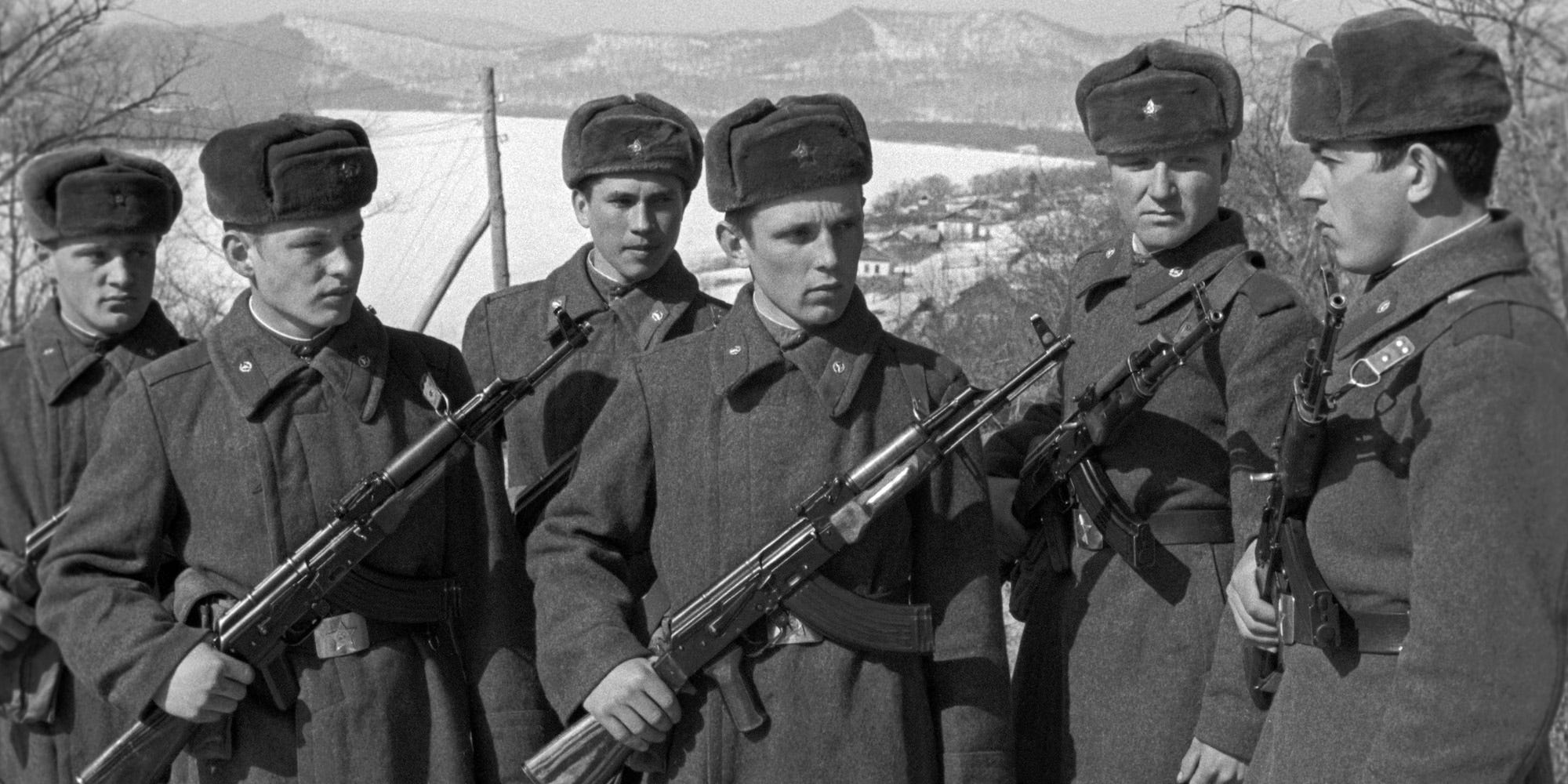
Nikolai Nazarov/TASS
- In March 1969, Soviet and Chinese troops clashed over an unremarkable but disputed islet in a river on their eastern border.
- Border clashes were nothing new, but the fighting over what China called Zhenbao Island and the Soviets called Damansky Island escalated.
- The conflict became so intense that both sides put their nuclear missiles on high alert, edging closer to nuclear war.
- Visit the Business section of Insider for more stories.
On the morning of March 2, 1969, Soviet border guards set out to confront 30 Chinese soldiers who were heading toward Zhenbao Island, a small islet on the Ussuri River between China and the Soviet Union.
Control of the island was disputed, but this didn't seem like a particularly unusual event, as thousands of incidents had occurred all along the Sino-Soviet border since 1964. While many resulted in brawls, including some at Zhenbao, few involved deadly force.
This time, however, it was a trap.
As the Soviet force – which included 60 men, two BTR armored personnel carriers (APCs), a truck, and a car – approached the island on the frozen river, the Chinese troops, joined by 300 soldiers who snuck onto the island the night before, opened fire.
Seven Soviet border guards, including their commander, were killed immediately. An intense two-hour firefight erupted, involving mortars, artillery, and anti-tank weapons.
Reinforcements rushed in, and when the fighting ceased, 31 Soviets were dead, 14 were wounded, and one BTR was destroyed. The Soviets claimed to have killed over 200 Chinese soldiers, and both sides retreated to their territory.
But the fight was far from over. In the coming days, the conflict became so intense that both sides placed their nuclear missiles on high alert, bringing the world close to nuclear war.
Brothers to rivals
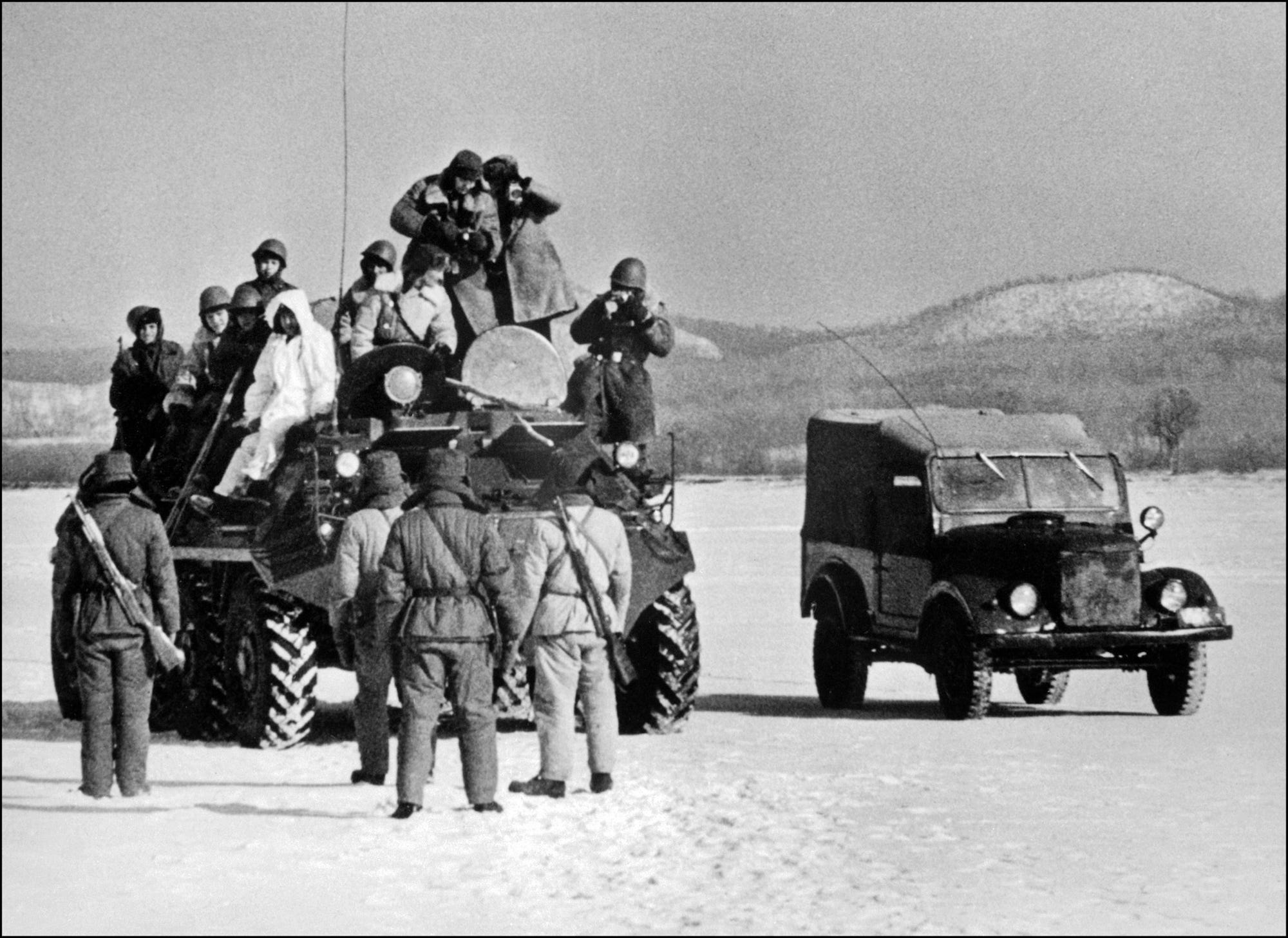
AFP via Getty Images
The fighting surprised most in the West. The USSR and China were the preeminent communist powers and were seen as brothers working closely together to spread communism.
They had signed a mutual defense treaty in 1950. The Soviets had also extensively trained and equipped China's military and were instrumental in starting China's nuclear weapons program.
But the relationship soured. Mao Zedong believed Moscow was reluctant to seriously confront the West, as in Korea, where China had fought the US and UN while the USSR stayed out.
The relationship further deteriorated when Stalin's successor, Nikita Khrushchev, secretly denounced Stalin and began de-Stalinization, which Mao labeled an act of revisionism. Khrushchev also began negotiating with the US on a nuclear test ban treaty.
Mao began to say the USSR was trying to dominate China and that China, not the USSR, should be the dominant communist power. By 1960, all Soviet advisors had left China, and Moscow had abandoned its promises to support China's nuclear program.
Border dispute
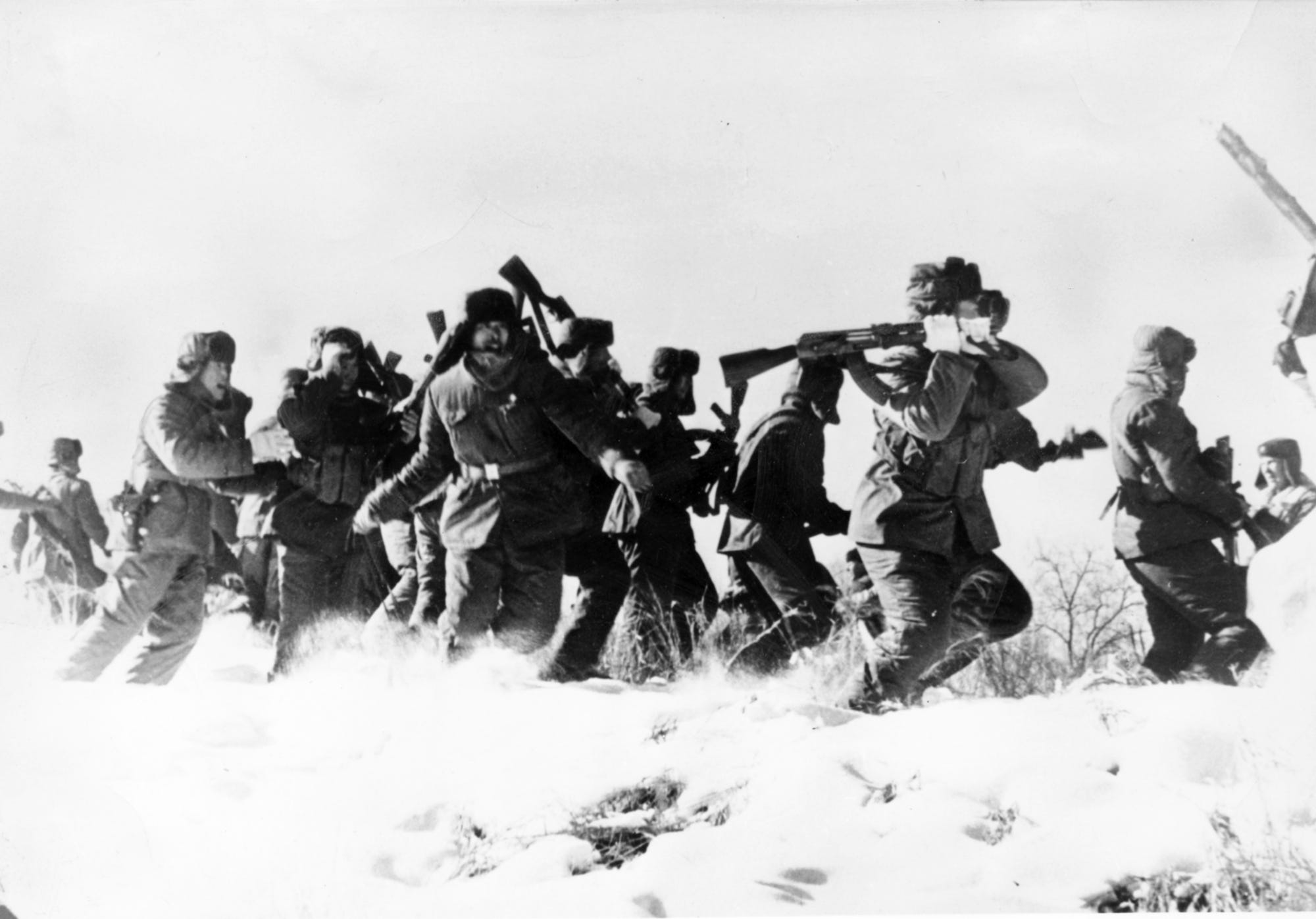
Sovfoto/Universal Images Group via Getty Images
Amid the Sino-Soviet split, China continued building its military capabilities. China detonated its first atomic bomb in 1964 and a hydrogen bomb three years later. By 1966, its military had grown to about 4 million men.
Against this backdrop, the Sino-Soviet border dispute took center stage. China complained that its northern borders were set by unfair treaties with the Russian Empire and needed to be revised.
Zhenbao Island, known to the Soviets as Damansky Island, became a focal point for the dispute, despite having virtually no strategic value.
Just 100 meters from the Chinese side of the river and 400 meters from the Soviets, the island was uninhabited, had a surface are of just 0.28 square miles, and was completely submerged part of the year.
The dispute was almost settled in 1964, when both sides tentatively agreed to give China control of some 400 river islands, including Zhenbao. But the agreement was scrapped after Mao's comments regarding other Russian territories were made public.
The Soviets then militarized the border, growing their forces there to 34 divisions, comprising as many as 290,000 men, by 1969. A mutual defense treaty signed with Mongolia in 1966 allowed thousands more Soviet soldiers to be stationed there, and in 1967, the USSR sent nuclear weapons to its Far East.
China had some 59 divisions along the border, most of them made up of only infantry and artillery.
Bloodshed
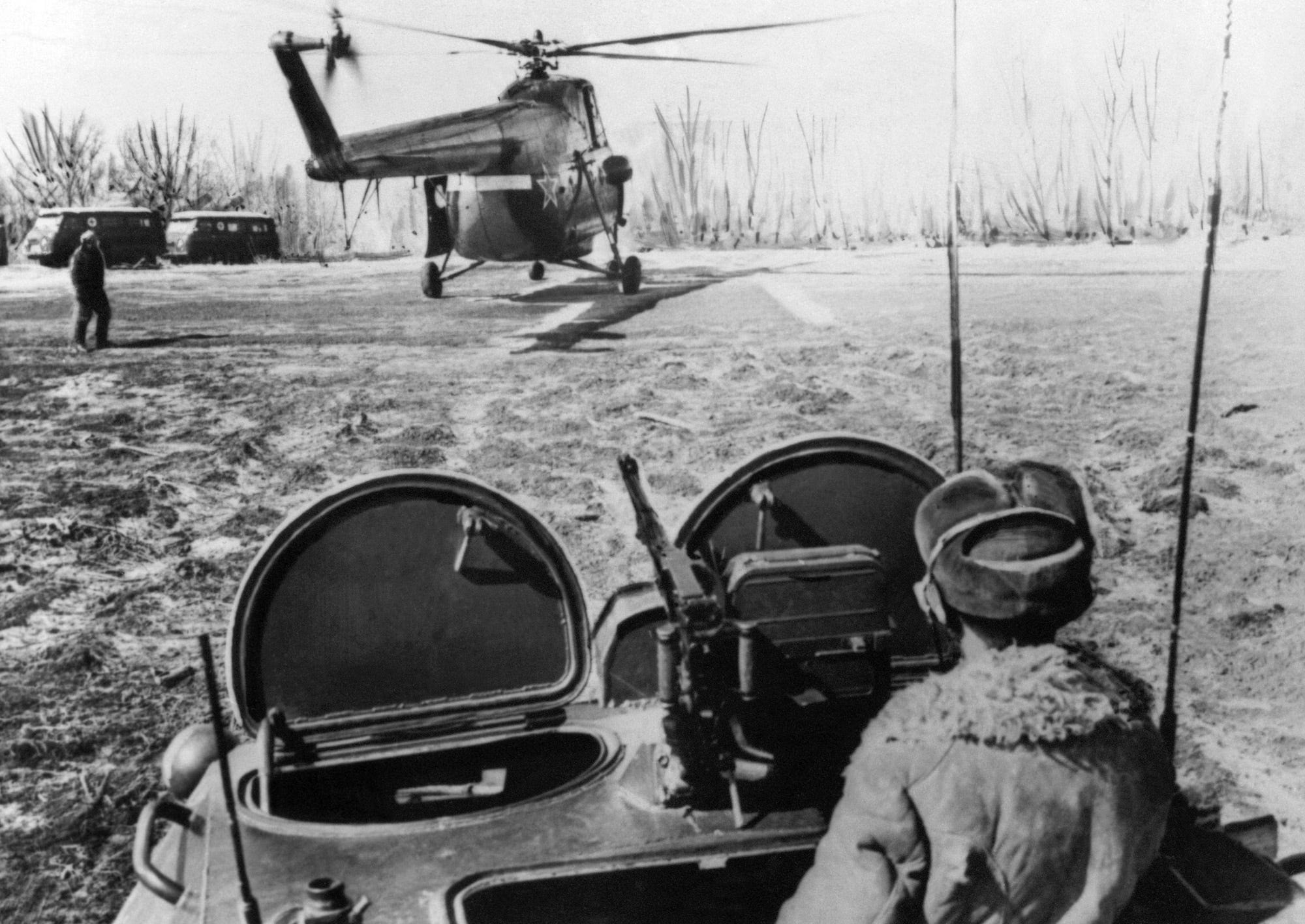
Yuri Muravin and Nikolai Nazarov/TASS
Both sides tested each other, and altercations, mostly fistfights and shoving, were common all along the border. The first deaths occurred on January 5, 1968, when a skirmish on Qiliqin Island left four Chinese dead.
Enraged, Mao and China's Central Military Commission wanted a response, and Zhenbao was selected as the location for it.
Moments after the ambush, Soviet reinforcements rushed to the scene and attacked the Chinese on the island. They managed to expel them before intense artillery and anti-tank fire forced the Soviets to retreat.
Both sides accused the other of unprovoked action, with China claiming the Soviets fired first. Sporadic fighting continued around the island for days. Unknown to the Chinese, the Soviets were preparing a counterattack, moving a massive number of tanks and artillery into position.
On March 15, the attack was launched. Fifty tanks, including the new T-62 tank, and APCs attacked some 2,000 Chinese troops on or around the island in a fight that lasted nine hours.
Soviet aircraft flew 36 sorties in support of the operation, and Soviet artillery, including the new BM-21 multiple rocket launcher, fired 10,000 rounds as far as 4 miles into China.
Both sides retreated from the island again after the fighting. The Soviets lost as many as 60 men, including the operation's commander, but claimed to have killed over 800 Chinese soldiers
Unsure how the Chinese would respond, the Soviets placed their Strategic Rocket Forces in the Far East on heightened alert, and Soviet media outlets warned China of the costs of nuclear war.
Aftermath
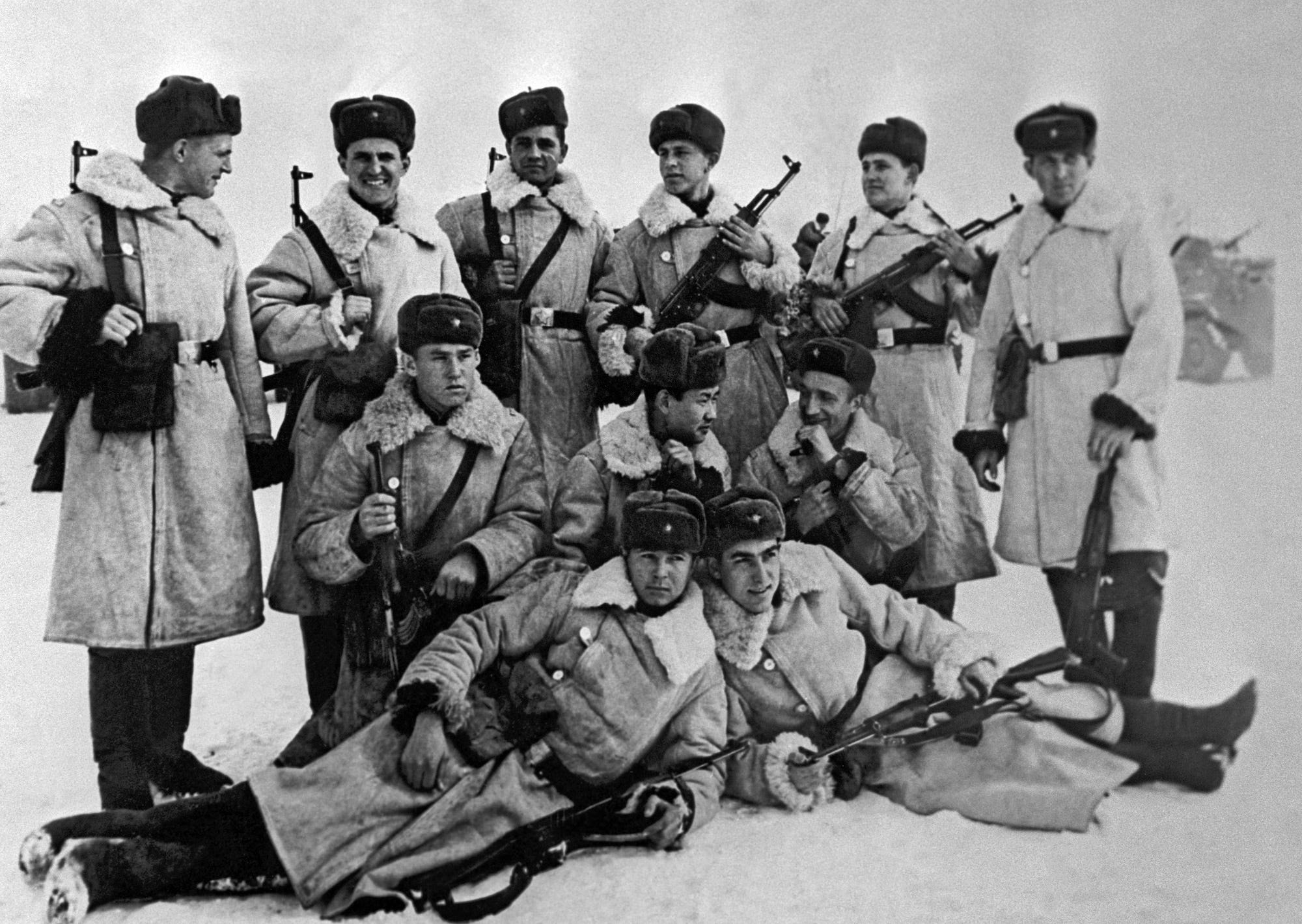
TASS via Getty Images
There was no more large-scale fighting around Zhenbao, but the situation there and elsewhere on the border remained tense for months - a Soviet ambush in China's far-western Xinjiang region in August 1969 killed over 20 Chinese soldiers.
The events made Chinese leaders realize just how close to war they actually came. In September, both countries agreed to return to negotiations. Still wary of Soviet intentions, the Chinese put their own nuclear forces on alert until negotiations began on October 20.
The battles had a profound effect on Sino-Soviet relations. They remained deeply distrustful of each other for the rest of the Cold War and effectively forced other communist countries to pick a side. Ten years after the incident, China invaded Vietnam out of concern over its Soviet ties.
The US decided to take advantage of the split, engaging China to counter the Soviets.
In 1971, Henry Kissinger, President Richard Nixon's national security advisor, secretly visited China. Nixon made an official visit less than a year later, ending more than two decades of the two countries having no relations.
The battles also had a long-term benefit for the Chinese military. A captured Soviet T-62 tank was reverse engineered and became the model for China's Type 69 and Type 79 main battle tanks. The original T-62 is still on display at a military museum in Beijing.
China received full control of Zhenbao Island in 1991, and the remaining disputes were finally settled in 2004.